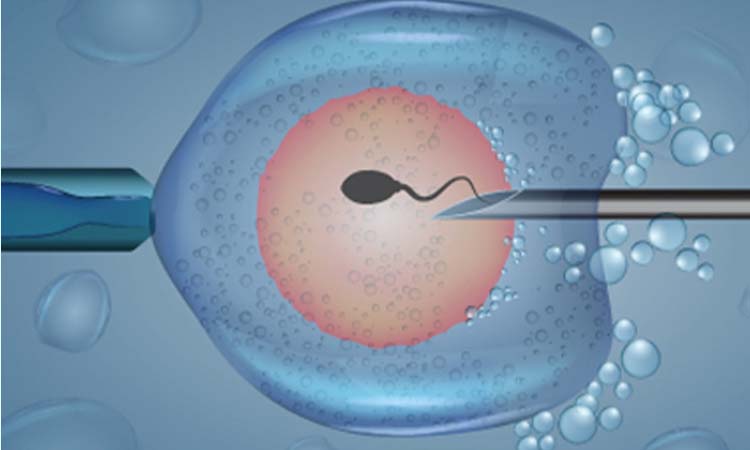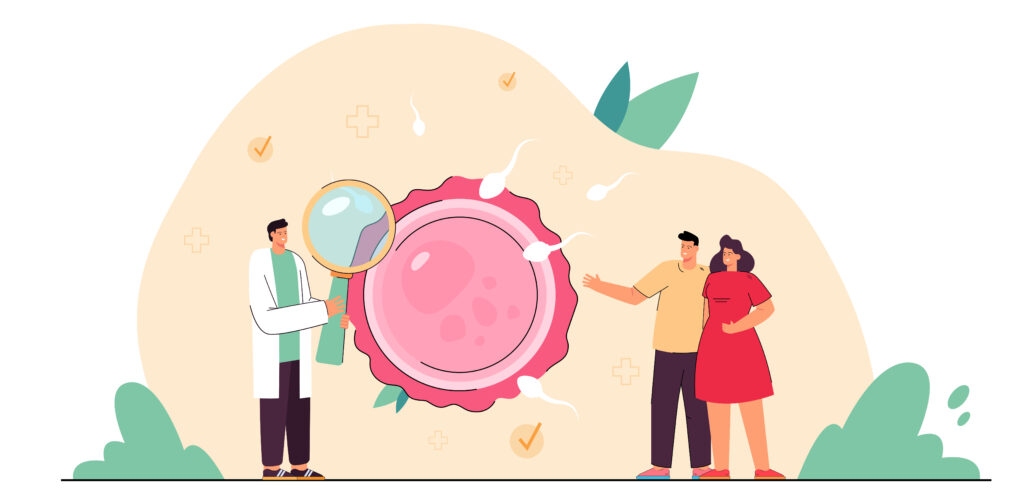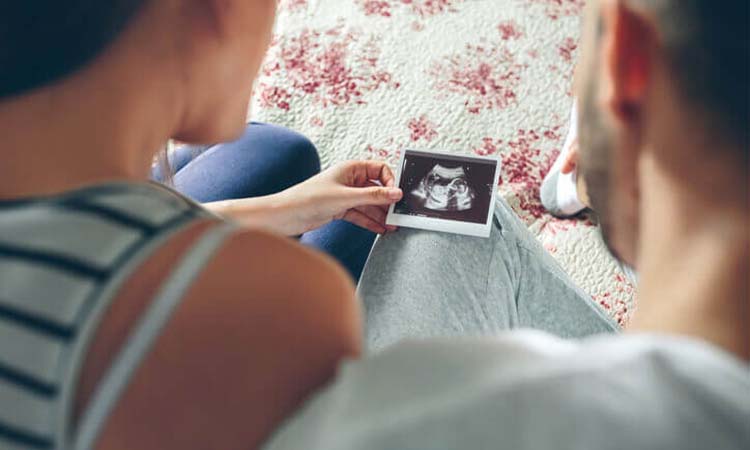Common Suggestions for IVF include tubal factor or problems with a woman’s fallopian tube; manly factor or problems with a mate’s sperm; endometriosis, a condition in which the filling of the uterus grows outside of the uterus. Another common suggestion for in vitro fertilization is unexplained gravidity, situations in which a croaker has not been suitable to make a definitive opinion.
The first step of IVF is to stimulate the ovaries, called ovulation induction. During this step, a woman takes multiple injections of hormones called gonadotropins. These are given by subcutaneous injections with veritably little needles that the woman can administer herself. This is done over a period of about 10 to 14 days.
During that time, a transvaginal ultrasound will be performed and blood situations will be covered to allow the IVF croaker to understand whether the ovary is meetly responding to the specifics which the case has been administering. At the applicable point in the cycle, when the IVF croaker determines that the eggs are mature, the case will administer a detector shot. This is an injection which allows the final development of the eggs. The junking of the eggs from the ovary occurs in a timed situation, 36 hours latterly. The egg reclamation is done under light general anaesthesia, so the case is actually unconscious, just like for other surgeries.
During egg reclamation, an ultrasound inquiry which has a needle attached is placed in the woman’s vagina. Using ultrasound, a croaker will guide the needle into the follicle, the fluid girding the egg. Mature eggs from each follicle are recaptured with a small suction device.
Once the eggs are in the Petri dishes, they ’re sorted and counted by the embryologist, the scientist that takes care of the eggs and sperm. The mate’s sperm are concentrated and also placed with the eggs in the Petri dish. That’s called fertilization. The coming morning, the embryologist can tell how numerous of the recaptured eggs which have been fertilized.
The last stage is the embryo transfer. This is where the embryos are placed in a woman’s uterus or womb. Embryo transfer is done under ultrasound. The embryo is placed in a little bitsy plastic catheter, guided through the cervix, into the uterus, the position is verified by ultrasound, and the embryo is released. This is done without anaesthesia and the case can walk off the table and head home.
In utmost cases, only one or two embryos are transferred to avoid multiple gravidity, halves or triumvirates. Embryos that aren’t transferred and which are grown out to day five can be firmed for unborn use.
IVF with Tone EGG
“ Can I conceive with low AMH and have a baby?” “ My ovarian reserve is low.” “ My egg quality is low, Is there commodity I can do to ameliorate it, am I ever going to be suitable to have a baby?”
Whatever way you choose to expression the question the answer is veritably likely yes. We ’ve helped numerous women who have plodded with an AMH of lower than 5 ( indeed lower than 1) with a normal FSH and other normal hormones and normal, regular ovulation who have been suitable to conceive and keep healthy babies to name. Just because of your AMH may be low, it’s not inescapably true that you aren’t going to be suitable to conceive. What becomes more important is that we look into the colorful “ minor factors” that may be getting in the way and creating a accretive impact on your fertility.
IVF with Donor EGG
Egg donation offers a real chance for a couple to have a child. It’s generally a decision that takes time to reach, generally a decision that’s made after trying IVF and other fertility treatments and it’s surely not a decision that should be taken smoothly. So egg donation is frequently sought by women who have reached a certain age and no longer have feasible eggs or for gay men who need an egg patron to have a child. Interestingly a woman does n’t have to choose an egg patron grounded on her blood type it does n’t matter, it does n’t impact the outgrowth at all.
Egg benefactors are generally women in their twenties who are in council orpost-college or just working. It should be known that egg patron agencies are generally run bynon-medical help so when seeking an egg patron it’s important to work with a estimable and good agency that provides you know honest and transparent information. So formerly a couple chooses a patron the patron has to go through a battery of webbing tests.
In traditional egg donation after a couple chooses an egg patron from the agency and that patron is good medically she begins the process of in-vitro fertilization, so the patron takes injections of hormones to help retain multiple eggs, now interestingly those eggs are only good for one month, that patron would lose the eggs anyway. So veritably importantly the patron isn’t affected by the process as it relates to her unborn fertility. We also recoup the egg from the egg follicles in the operating room under anaesthesia, the eggs are also handed to the intended parents where sperm is fitted into the eggs. The embryo is allowed to develop for five days, and on the fifth day, we transfer one embryo to the intended mama. Fresh embryos can be firmed and there’s no shelf life on those embryos.
A common question I’ve from intended maters using an egg donation is what’s my part with the baby? And it’s true that the hard wiring the DNA of the sperm and egg do impact effects like the characteristics of the child but we’re learning further about commodity called epigenetics whereby a womb is a place where that woman, that mama starts to impact the DNA of the factual fetus. Now we’re seeing gestation rates from firmed embryos similar to those of fresh embryos nearly identical so whether a couple chooses to have a fresh embryo transfer or a frozen embryo transfer it does n’t matter, we see the same gestation rate.
The good news about having firmed embryos is if the first embryo transfer does n’t work they’ve an immediate backup. And of course, if the first embryo transfer workshop and it works sixty-six percent of the time also the frozen embryos could be a alternate child in times to come. At Santa Monica Fertility we really specialize in participated egg donation and this is grounded on my observation that couples have a veritably hard time navigating egg donation agencies and all the moving corridor so we find benefactors that are excellent benefactors, proven benefactors and give those benefactors to our willed parents. So with participated egg donation benefactors go through the same webbing process as they would with traditional egg donation but when we get the eggs further than one couple uses those eggs. So, for illustration, a good patron will make about sixteen eggs, one couple will get eight eggs and from those eight eggs because it’s a proven good patron we frequently get three or further of the advanced embryos we call them Blastocyst. Each bone has a chance of sixty-six percent in giving rise to birth. So we transfer one embryo and we indurate the rest.
If the couple doesn’t achieve a gestation with the first transfer also the alternate and the third transfers are free. So our program is really erected-in partnering with cases and benefactors getting good benefactors proven benefactors that make great eggs proven eggs and also assigning and also assigning a portion of the eggs that allows the couple to have multiple chances at a baby. And of course one of the biggest benefits is because further than one couple is participating the eggs the costs are much lower than with traditional egg donation. And we plant this program to be veritably effective, cases like the idea that the croaker is privately involved in opting the patron.
There has been a recent increase in frozen patron egg banks and firmed patron eggs are principally eggs that aren’t used at the time of egg reclamation and firmed for unborn use. But there are some downsides. Whereas fresh embryos or indeed firmed embryos have birth rates of about sixty-six percent, the rate we see with frozen eggs is about fifty-five percent. So it’s not bad but it’s lower than the rate with fresh. We also do n’t get as numerous embryos from frozen eggs as we do with fresh eggs, it’s more variable because the egg was firmed and fused they’re more vulnerable.



